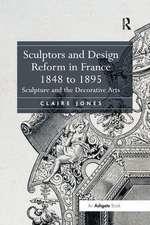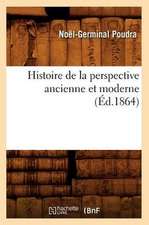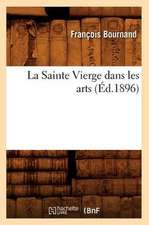Writing Fashion in Early Modern Italy: From Sprezzatura to Satire: Visual Culture in Early Modernity
Autor Eugenia Paulicellien Limba Engleză Paperback – 26 aug 2016
| Toate formatele și edițiile | Preț | Express |
|---|---|---|
| Paperback (1) | 325.50 lei 6-8 săpt. | |
| Taylor & Francis – 26 aug 2016 | 325.50 lei 6-8 săpt. | |
| Hardback (1) | 827.24 lei 6-8 săpt. | |
| Taylor & Francis – 18 iun 2014 | 827.24 lei 6-8 săpt. |
Din seria Visual Culture in Early Modernity
- 22%
 Preț: 324.16 lei
Preț: 324.16 lei - 18%
 Preț: 911.53 lei
Preț: 911.53 lei -
 Preț: 311.37 lei
Preț: 311.37 lei - 9%
 Preț: 1022.24 lei
Preț: 1022.24 lei -
 Preț: 312.12 lei
Preț: 312.12 lei -
 Preț: 356.69 lei
Preț: 356.69 lei -
 Preț: 313.67 lei
Preț: 313.67 lei -
 Preț: 432.98 lei
Preț: 432.98 lei - 12%
 Preț: 343.55 lei
Preț: 343.55 lei - 25%
 Preț: 324.16 lei
Preț: 324.16 lei - 25%
 Preț: 769.92 lei
Preț: 769.92 lei - 13%
 Preț: 338.33 lei
Preț: 338.33 lei - 17%
 Preț: 259.98 lei
Preț: 259.98 lei - 25%
 Preț: 326.11 lei
Preț: 326.11 lei -
 Preț: 471.08 lei
Preț: 471.08 lei - 28%
 Preț: 826.84 lei
Preț: 826.84 lei - 26%
 Preț: 819.90 lei
Preț: 819.90 lei - 28%
 Preț: 878.42 lei
Preț: 878.42 lei - 28%
 Preț: 829.69 lei
Preț: 829.69 lei - 25%
 Preț: 325.43 lei
Preț: 325.43 lei - 30%
 Preț: 853.03 lei
Preț: 853.03 lei - 13%
 Preț: 338.33 lei
Preț: 338.33 lei - 30%
 Preț: 830.92 lei
Preț: 830.92 lei - 16%
 Preț: 338.33 lei
Preț: 338.33 lei - 25%
 Preț: 826.01 lei
Preț: 826.01 lei - 30%
 Preț: 772.60 lei
Preț: 772.60 lei - 18%
 Preț: 1017.63 lei
Preț: 1017.63 lei - 30%
 Preț: 768.62 lei
Preț: 768.62 lei - 13%
 Preț: 338.33 lei
Preț: 338.33 lei - 30%
 Preț: 771.07 lei
Preț: 771.07 lei - 22%
 Preț: 324.16 lei
Preț: 324.16 lei - 30%
 Preț: 772.76 lei
Preț: 772.76 lei - 11%
 Preț: 347.33 lei
Preț: 347.33 lei - 31%
 Preț: 765.03 lei
Preț: 765.03 lei -
 Preț: 489.26 lei
Preț: 489.26 lei - 25%
 Preț: 822.91 lei
Preț: 822.91 lei - 12%
 Preț: 300.09 lei
Preț: 300.09 lei - 26%
 Preț: 820.73 lei
Preț: 820.73 lei - 25%
 Preț: 829.69 lei
Preț: 829.69 lei - 28%
 Preț: 826.84 lei
Preț: 826.84 lei - 30%
 Preț: 776.03 lei
Preț: 776.03 lei
Preț: 325.50 lei
Preț vechi: 371.78 lei
-12% Nou
Puncte Express: 488
Preț estimativ în valută:
62.28€ • 65.03$ • 51.55£
62.28€ • 65.03$ • 51.55£
Carte tipărită la comandă
Livrare economică 05-19 aprilie
Preluare comenzi: 021 569.72.76
Specificații
ISBN-13: 9781138269583
ISBN-10: 1138269581
Pagini: 286
Dimensiuni: 174 x 246 mm
Greutate: 0.46 kg
Ediția:1
Editura: Taylor & Francis
Colecția Routledge
Seria Visual Culture in Early Modernity
Locul publicării:Oxford, United Kingdom
ISBN-10: 1138269581
Pagini: 286
Dimensiuni: 174 x 246 mm
Greutate: 0.46 kg
Ediția:1
Editura: Taylor & Francis
Colecția Routledge
Seria Visual Culture in Early Modernity
Locul publicării:Oxford, United Kingdom
Notă biografică
Eugenia Paulicelli is Professor of Italian, Comparative Literature and Women’s Studies at Queens College and the Graduate Center of The City University of New York, USA. She directs two programs in Fashion Studies: a PhD concentration and an MA in Liberal Studies.
Recenzii
'Eugenia Paulicelli presents a convincing argument for the crucial significance of clothing and fashion in the mentalities of early modern Europe; her book is richly informed by the research of economic, social, and feminist historians, historians of dress, and by her own alertness to the links between past and present in the ways that dress is presented today. Her narrative incorporates close readings of a wide and interesting array of early modern writings, and offers a wealth of intriguing examples - the fashionable rosary, the mustachioed gallant, the revolver-toting Frenchwoman-as well as possibilities for further work in the field.' Ann Rosalind Jones, Smith College, USA
'In the sixteenth and seventeenth centuries fashion came to characterise a 'modern' new world, one in which changes in shapes, materials, colours and manners had to be recognised and understood. Eugenia Paulicelli's book is a spectacular investigation of the discourse of fashion in early modern Italy, from Baldassarre Castiglione to Cesare Vecellio, to Arcangela Tarabotti. In this book you will find yourself immersed in an early modern society obsessed with civility, love, vice, dissimulation and, of course, fashion.' Giorgio Riello, University of Warwick, UK
'... it's impossible to address the myriad of issues, attitudes and details that Paulicelli has expertly compiled in this text. Just put this book in your hands. In fact, I'm going to read it again ...' Worn Through
'Paulicelli has painted a vast canvas, revealing the elusiveness of fast-moving fashion and anxieties around its management or control in the century before Louis XIV laid the foundations of French fashion-leadership ... [this book] will be of particular use to students and teachers of literature who are interested in the interconnections between word and image, and between later theories of fashion and early modern representations of dress.' Costume
'The focus on 'writing' fashion allows the reader a fascinating insight into the ways in which dress shaped and was shaped by discourse which ranged much further than clothing the body.' Reviews in History
'We should be grateful to Eugenia Paulicelli for laying the groundwork for these exciting opportunities for further research and producing a book that will undoubtedly become a standard reference point in fashion history.' Renaissance Quarterly
'The book as a whole is aimed at a specialist, academic audience ... Its opening chapter provides an introduction to fashion in early modern Italy, helpfully integrating the English and Italian historiography on this topic. The book also serves to draw attention, in the context of English-language discussions of European fashion, to the importance of the as-yet-untranslated texts discussed in the last part of the book.' Parergon
'Published in Ashgate’s “Visual Culture in Early Modernity” series, the volume is well produced with respectable illustrations.' CAA Reviews
'In the sixteenth and seventeenth centuries fashion came to characterise a 'modern' new world, one in which changes in shapes, materials, colours and manners had to be recognised and understood. Eugenia Paulicelli's book is a spectacular investigation of the discourse of fashion in early modern Italy, from Baldassarre Castiglione to Cesare Vecellio, to Arcangela Tarabotti. In this book you will find yourself immersed in an early modern society obsessed with civility, love, vice, dissimulation and, of course, fashion.' Giorgio Riello, University of Warwick, UK
'... it's impossible to address the myriad of issues, attitudes and details that Paulicelli has expertly compiled in this text. Just put this book in your hands. In fact, I'm going to read it again ...' Worn Through
'Paulicelli has painted a vast canvas, revealing the elusiveness of fast-moving fashion and anxieties around its management or control in the century before Louis XIV laid the foundations of French fashion-leadership ... [this book] will be of particular use to students and teachers of literature who are interested in the interconnections between word and image, and between later theories of fashion and early modern representations of dress.' Costume
'The focus on 'writing' fashion allows the reader a fascinating insight into the ways in which dress shaped and was shaped by discourse which ranged much further than clothing the body.' Reviews in History
'We should be grateful to Eugenia Paulicelli for laying the groundwork for these exciting opportunities for further research and producing a book that will undoubtedly become a standard reference point in fashion history.' Renaissance Quarterly
'The book as a whole is aimed at a specialist, academic audience ... Its opening chapter provides an introduction to fashion in early modern Italy, helpfully integrating the English and Italian historiography on this topic. The book also serves to draw attention, in the context of English-language discussions of European fashion, to the importance of the as-yet-untranslated texts discussed in the last part of the book.' Parergon
'Published in Ashgate’s “Visual Culture in Early Modernity” series, the volume is well produced with respectable illustrations.' CAA Reviews
Cuprins
Part I The Cultures of Fashion; Chapter 1 Moda and Moderno; Chapter 2 The Book of the Courtier and the Discourse on Fashion: Sprezzatura, Gender, “National Identity”; Part II The Fabric of Cities: Nations, Empire in Costume Books by Cesare Vecellio and Giacomo Franco; Chapter 3 Mapping the World: Dress in Cesare Vecellio’s Costume Books (1590, 1598); Chapter 4 –1614); Part III Beyond Sprezzatura: Fashion as Excess; Chapter 5 Sister Arcangela Tarabotti: Hair, Wigs and other Vices; Chapter 6 La Moda and its Technologies: Agostino Lampugnani’s La Carrozza da nolo, ovvero del vestire e usanze alla moda (The rented carriage or of clothing and fashionable habits, 1648–1650);
Descriere
The first comprehensive study on the role of Italian fashion and Italian literature, this book emphasizes the centrality of Italian literature and culture for understanding modern theories of fashion and gauging its impact in the shaping of codes of civility and taste in Europe and the West. Using literature to uncover what has been called the 'animatedness of clothing,' the author explores the political meanings that clothing produces in public space.














![Cours D'Architecture Qui Comprend Les Ordres de Vignole, [1] (Ed.1710)](https://i0.books-express.ro/bt/9782012533950/cours-d-architecture-qui-comprend-les-ordres-de-vignole-1-ed-1710.jpg)














